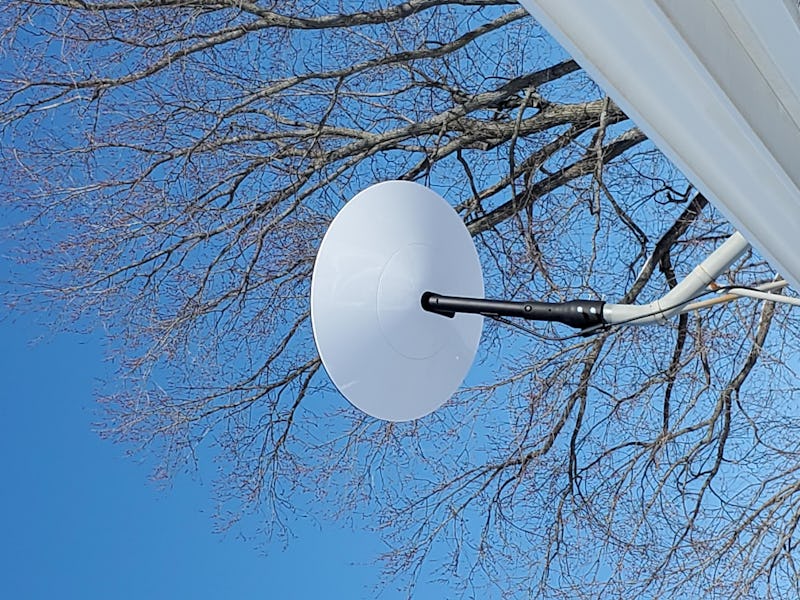SpaceX Starlink beta impressions: what a cybersecurity expert thinks
A cybersecurity expert who runs his own alternative to Google at home has tried out Starlink — and he’s impressed.

SpaceX Starlink is making a great first impression on early users.
The satellite internet service aims to deliver a high-speed, low-latency connection to almost anywhere with a view of the open sky. It does this through SpaceX’s ever-growing Starlink constellation, which currently numbers over 1,000 satellites, orbiting much closer to the Earth than other internet constellations at an altitude of 550 kilometers (340 miles).
Nicholas Underwood, a 25-year-old cybersecurity expert. has tried out the ongoing beta service at his new home in Stevens Point, Wisconsin. He’s come away impressed.
“I would definitely say it's non-tech-person ready,” Underwood tells Inverse. “The setup, it can't get easier. You literally can't get any satellite internet connection easier to set up.”
Want to find out more top tips about how the installation process works, how the latency compares, and how Starlink could help users ditch cloud-based storage services? Read the full interview, only in MUSK READS+.
SpaceX is aiming high with its service. A January 2021 presentation claimed the company plans to eventually offer speeds of up to 10 gigabits per second (Gbps). By comparison, Speedtest data shows the average internet speed in the United States is just 181 megabits per second (Mbps).
The firm is also aiming to launch a large number of satellites to support this service. A filing in October 2019 showed the company had applied for permission to launch 42,000 satellites. By comparison, there were only around 5,000 satellites orbiting Earth in total at the start of 2019.
Starlink could help people like Underwood. He was limited to slower speeds by local infrastructure. When he moved into his new home seven months ago, he received speeds of just 3 Mbps “on a good day.”
The firm launched the first batch of 60 Starlink satellites in May 2019. It started rolling out the “Better Than Nothing” beta to a small number of customers in late 2020. It advised users that they could expect to receive speeds of around 50 to 150 Mbps.
Underwood recorded a speed of around 80 Mbps on the first day he installed the dish. Over time, the service seemed to get better. On Reddit, he shared how the dish still managed to reach 110 Mbps even in two feet of snow, thanks to the built-in heater:
While speaking with Inverse, Underwood recorded a speed of 170 Mbps.
This doesn’t come cheap, though. The Starlink Kit that includes the necessary hardware to get online costs $499. The service costs an extra $99 per month. These figures don’t include taxes and shipping.
But when the alternative is painfully slow internet, Starlink could be a much-needed lifeline.
TO READ THE FULL INTERVIEW, SUBSCRIBE TO MUSK READS+.
Here is what you will gain from subscribing to MUSK READS+:
- Three emails per week, enabling fans to go deeper into the week’s news.
- Original interviews and reporting, longform analysis, previews and recaps of major events, including earnings calls and more.
- Community-focused extras like responses to reader mail, an upcoming event calendar, and notable anniversaries.
- An archive of previous subscriber-only content, so you can easily read back over what you might have missed.
- Promotional deals and offers.
- Supporting original, independent journalism.
MUSK READS+ is a fully independent operation. We are not Elon Musk, nor are we employed by him. Our job is to report the events we find newsworthy, giving you the inside look at the worlds of space rockets, electric cars, clean energy, and more. It means first-hand accounts of a SpaceX rocket launch, Tesla insights from third-party analysts, and more.
If you want to support us in our mission, and receive original interviews and analysis, consider contributing with a subscription.
This article was originally published on